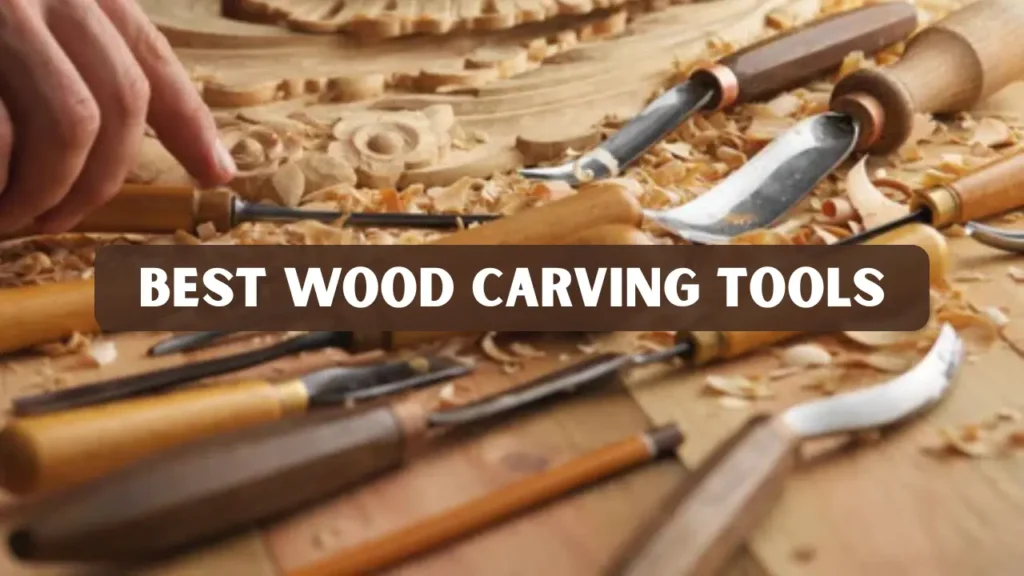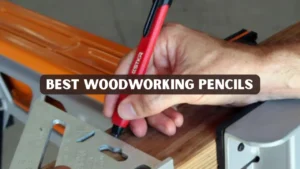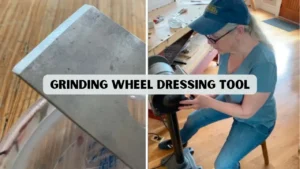Key Takeaways
- Discover the best wood carving tools every beginner and hobby woodcarver should own.
- Learn how to choose the right tools based on project type, comfort, and wood density.
- Explore sharpening, maintenance, and safety tips for long-lasting performance.
- Get practical recommendations backed by real-world woodcarving experience.
What Is Wood Carving and Why It Matters
Wood carving is both a creative and practical skill that combines patience, focus, and craftsmanship. Whether you are a hobby woodcarver, DIY enthusiast, or an artist looking to explore a new medium, using the best wood carving tools can help you achieve professional-level results.
Choosing the right tools is not just about picking famous brands. It is about precision, control, and comfort. Beginners often make the mistake of starting with cheap or incomplete kits, which leads to poor results and frustration. In this guide, you will find the most reliable and well-designed tools trusted by both professionals and beginners.
Wood Carving and Its Techniques
Before exploring the tools, it is important to understand the main carving methods. Each requires specific tools and a different approach:
- Whittling: Cutting shapes using a small knife to create simple designs or figures. It’s a great starting point for beginners to develop control and precision.
- Relief Carving: Sculpting figures that rise slightly from a flat background. This method is ideal for decorative wall art and detailed wooden panels.
- Chip Carving: Removing small wood chips to form geometric or decorative patterns. It’s popular for adding intricate designs to furniture and boxes.
- Carving in the Round: Shaping a complete three-dimensional object. This advanced technique brings lifelike sculptures and figurines to life.
Each method demands precision, and that precision depends on using the right tool.
10 Best Wood Carving Tools Every Beginner Should Have
Each tool below serves a unique purpose. Together, they give you versatility and control when learning carving.
1. Carving Knife
A carving knife is the most essential tool in any woodcarver’s collection. It is used for shaping, trimming, and refining small details.
What to Look For:
- Comfortable wooden handle for a secure grip. It reduces hand fatigue and provides better stability during detailed carving work.
- Stainless steel or carbon steel blade for long-lasting sharpness. These materials ensure durability and make sharpening easier over time.
- Short blade for better control and clean cuts. It helps achieve precise detailing, especially in tight or curved areas.
Best for: Rough shaping, trimming, and detailing smaller projects.
2. Gouges
Gouges are used to scoop and shape wood. They are perfect for creating curves, hollows, and rounded designs.
Types of Gouges:
- Shallow Gouge: Best for smoothing surfaces and gentle curves. It’s perfect for refining details and creating soft transitions in your design.
- Deep Gouge: Ideal for hollowing out large sections. This tool efficiently removes excess wood while maintaining control over depth and shape.
- V-Gouge: Great for carving lines, grooves, and textures. It adds depth and definition, making patterns and outlines stand out clearly.
3. Chisels
Chisels are essential for creating flat surfaces, sharp corners, and background removal in relief carving.
Choosing the Right Chisel:
- Bevel-edge chisels are good for angled and detailed work. Their tapered sides make them excellent for reaching tight corners and precise joints.
- Firmer chisels are thicker and better for hardwoods. They provide extra strength and stability when working on dense materials.
- Always use a mallet, not a hammer, to prevent damage. A wooden or rubber mallet ensures controlled force without chipping the chisel handle.
Maintenance Tip: Keep chisels sharp using a honing guide. A dull chisel will crush wood fibers instead of slicing them cleanly.
4. V-Tools
A V-tool, also called a parting tool, is used for engraving lines and textures. It is a must-have for adding depth and definition.
Why It’s Important:
- Adds texture and dimension to patterns. It enhances the visual depth of your carving, making designs look more dynamic and detailed.
- Useful for lettering and borders. This tool helps create crisp outlines that make text and edges stand out beautifully.
- Helps define shapes with clean, sharp lines. It’s perfect for emphasizing fine details and separating different areas of a design.
5. Mallet
A mallet is used to control the impact on chisels and gouges. It provides power without damaging your tools.
Selecting a Mallet:
- Wooden Mallet: Offers balanced control for general carving. It delivers consistent force without damaging your tools or wood surface.
- Rubber Mallet: Best for light-duty or detailed carving. Its softer head absorbs impact, allowing gentle taps for delicate adjustments.
- Carver’s Mallet: Round shape reduces wrist fatigue during long carving sessions. It provides smooth, even strikes for better precision and comfort.
6. Veiners
Veiners are narrow, deep gouges that allow you to carve thin, curved lines or textures.
Uses:
- Adding texture like hair, fur, or tree bark. This tool helps bring realistic detail and depth to natural elements in your carving.
- Creating deep, narrow grooves. It’s ideal for defining lines and adding contrast between different carved sections.
- Refining curves in detailed sculptures. It allows smooth shaping and cleanup of intricate areas without removing too much material.
Pro Tip: Use veiners for the final touches of your project to bring out intricate textures that enhance the visual depth of your work.
7. Hook Knife
A hook knife, also known as a crook knife, has a curved blade used to hollow out wood. It is perfect for carving spoons, bowls, and other curved shapes.
Features to Consider:
- Tight curve for small and detailed work. Perfect for carving facial features, folds, and other fine elements in small projects.
- Wide curve for larger hollows. Helps remove more wood efficiently when shaping bowls, spoons, or large reliefs.
- Double-edged options for both left- and right-hand use. Offers flexibility and smoother motion when carving from multiple angles.
8. Sharpening Stone
Sharp tools work better and are safer to use. A sharpening stone, or whetstone, is vital for maintaining sharp edges on all blades.
How to Use:
- Wet the stone before sharpening. Moistening prevents overheating and ensures smoother blade movement.
- Keep the blade at a 20–25° angle. This angle maintains edge durability while achieving a razor-sharp finish.
- Move it in smooth, even strokes. Consistent motion helps sharpen evenly and avoids uneven blade wear.
9. Carving Glove and Thumb Guard
Safety gear is just as important as your carving tools. It helps prevent injuries and provides confidence when handling sharp blades.
Safety Gear Options:
- Cut-resistant gloves: Reinforced with protective fibers. These gloves help prevent accidental nicks and cuts during detailed carving work.
- Leather thumb guard: Protects your guiding hand. Essential for close-up carving, it adds a strong layer of protection without limiting movement.
- Finger tape: Ideal for smaller precision projects. Offers flexibility and grip while shielding your fingers from friction and minor cuts.
10. Bench Knife
A bench knife is a small knife used for trimming, shaping, and final detailing. It offers control for finishing touches.
Advantages:
- Cuts smoothly across wood grain. Ideal for shaping and trimming small details without tearing the wood fibers.
- Excellent for tight corners. Allows you to reach and refine areas that larger tools can’t access easily.
- Compact and comfortable to handle. Its ergonomic design ensures better control during long carving sessions.
Bench knives are often used in finishing stages to clean up fine details and small imperfections that other tools cannot reach.
How to Choose the Right Wood Carving Tool Set
When buying a complete wood carving set, consider these key factors:
- Handle Comfort: Ergonomic handles reduce hand fatigue. Comfortable grips help you carve longer without strain, especially during detailed work.
- Blade Quality: High-carbon steel stays sharp longer. A sharp, durable blade ensures smooth cuts and reduces the need for frequent sharpening.
- Balance: A well-balanced tool provides better control. Proper balance helps maintain precision and prevents slips while carving.
- Purpose: Match your tools with your carving style. Choosing tools suited to your projects, like whittling or relief carving, improves results and efficiency.
- Durability: Choose reliable brands known for long-lasting performance. Investing in quality tools saves money over time and enhances your carving experience.
Maintenance and Care for Longevity
Proper care helps your best wood carving tools last for years.
- Clean After Each Use: Wipe off dust and moisture. Regular cleaning prevents rust buildup and keeps your tools performing well.
- Oil the Handles: Use linseed or mineral oil for wood protection. This keeps wooden handles from drying out or cracking over time.
- Store Safely: Keep tools in a roll or rack to protect sharp edges. Proper storage prevents dulling and accidental injuries.
- Sharpen Regularly: Sharp tools cut smoothly and reduce the risk of accidents. Maintaining sharp blades ensures precision and better control during carving.
Safety Tips for Beginners
Wood carving is rewarding but requires care and attention. Follow these safety tips:
- Always carve away from your body. This reduces the chance of injury and helps maintain safe carving habits.
- Use sharp tools to avoid slipping. Dull blades require more force and increase the risk of accidents.
- Work in good lighting conditions. Proper light ensures visibility for precise, detailed cuts.
- Keep your workspace clean. A tidy area prevents distractions and keeps your tools within easy reach.
- Take breaks to stay focused. Short rests help prevent fatigue and improve overall carving accuracy.
Best Wood Types for Carving
Different woods offer different carving experiences. Choosing the right type makes your project easier.
- Basswood: Soft and ideal for beginners. Its fine, even texture makes it easy to shape and forgiving for mistakes.
- Butternut: Smooth and easy to carve for relief projects. Known for its light color and straight grain, it’s great for detailed designs.
- Pine: Affordable and widely available. A good choice for practice pieces and learning basic carving techniques.
- Cherry: Harder wood with a smooth finish. Offers a beautiful reddish tone and polishes well for professional-looking results.
- Walnut: Dense, dark wood perfect for detailed carving. Its rich color and strength make it ideal for advanced woodcarving projects.
Real-World Example
Conclusion
Every successful woodcarving project begins with the right tools. Investing in the best wood carving tools such as carving knives, chisels, gouges, and mallets allows beginners to build skill, precision, and confidence.
When combined with proper maintenance and safety practices, these tools help you transform a simple piece of wood into something creative and meaningful. Whether you carve as a hobby or a passion, each cut brings you closer to mastering the craft.
Frequently Asked Questions
1. What are the best wood carving tools for beginners?
A good starter kit includes a carving knife, gouge, chisel, V-tool, hook knife, and sharpening stone.
2. How often should tools be sharpened?
Light honing after every few hours of use and full sharpening weekly if carving regularly.
3. Can regular knives be used for carving wood?
No, kitchen or utility knives are not suitable. They lack proper blade angles and hardness for carving.
4. What is the easiest project for beginners?
Start with small projects like spoons or animal figures made from softwood.
5. How should carving tools be stored?
Store in a dry place using a roll-up pouch or rack to prevent rust and dullness.




